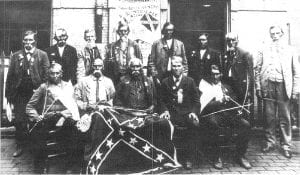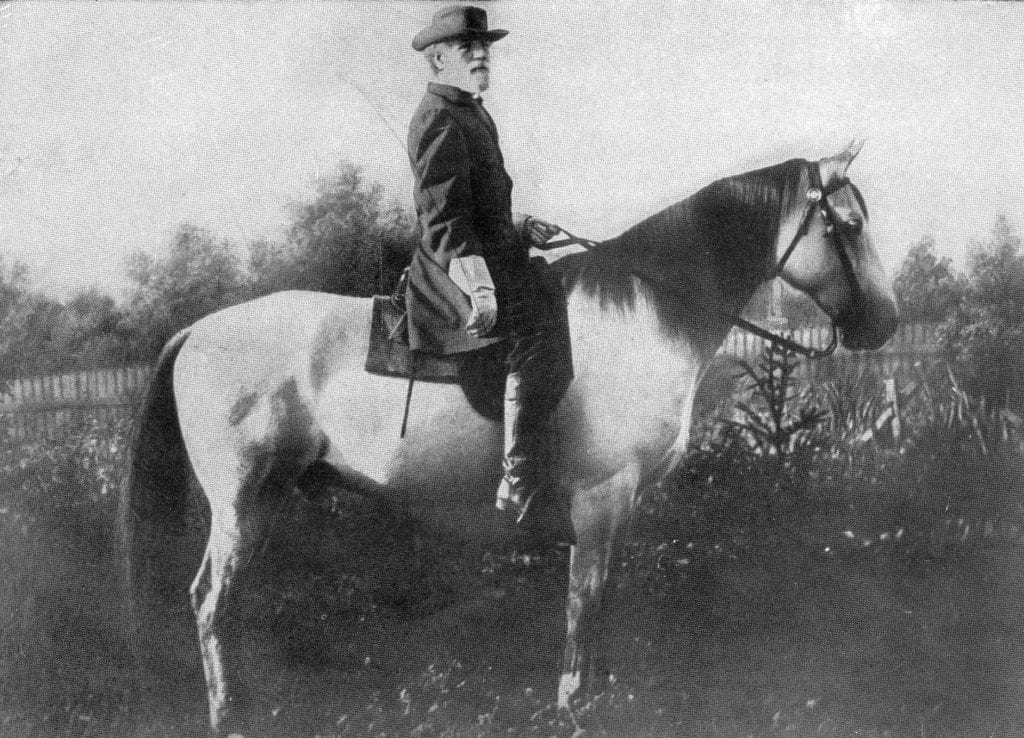This story begins near Appomattox Courthouse, the 12th of April, 1865. Battle-hardened Union and Confederate soldiers are facing each other across a road, both sides holding their weapons and flags.
But today there will be no fight. Lee’s Army of Northern Virginia is here to surrender its arms, and Union Major General Chamberlain has been tasked to receive them. Imagine yourself at this scene, and read the words of Gen. Chamberlain:

“….the men face inward towards us across the road, twelve feet away; then carefully “dress” their line, each captain taking pains for the good appearance of his company…. They fix bayonets, stack arms; then, hesitatingly, remove cartridge-boxes and lay them down.”
Keep hold of this scene, the hesitant surrender of weapons. Then read what Chamberlain wrote next:
“Lastly, reluctantly, with agony of expression, they tenderly fold their flags, battle-worn and torn, blood-stained, heart-holding colors, and lay them down; some frenziedly rushing from the ranks, kneeling over them, clinging to them, pressing them to their lips with burning tears.”
Is it any wonder that today many hold dear the Southern Cross, that battle flag of the Confederacy? Those men of the South had been through fire and hell with that banner, and their passion has been passed down through the years. Let me give you one story of the 55th North Carolina.
This unit had arrived to Gettysburg as an untried regiment, under its commander, Colonel J. K. Connally. He and his men were advancing toward Union troops, along with two Mississippi regiments to their right.

Things heated up fast, and several color-bearers of the 55th went down. The colonel then seized the flag and moved forward, but was also shot. Major Belo raced to his commander and asked if he was badly hit. Connally replied, “Yes, but pay no attention to me! Take the colors and keep ahead of the Mississippians.”
Story after story tells of men seizing the colors from those fallen, lofting it high and advancing toward the enemy. It was often fatal to do so, and these men knew the risk. They also knew the importance of that flag in battle, and thought first of the task at hand and guiding their fellows through the fight. Union Sgt. Alfred Carpenter once described how he had seen Confederates “…stagger from their ranks by the scores, hundreds, thousands… Time after time, these colors fall but are quickly caught up until scarcely a man is left around them.”
Many fly this flag still, honoring the memory of men who fought and died under it.

